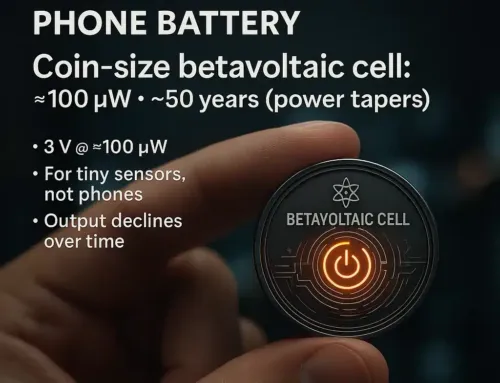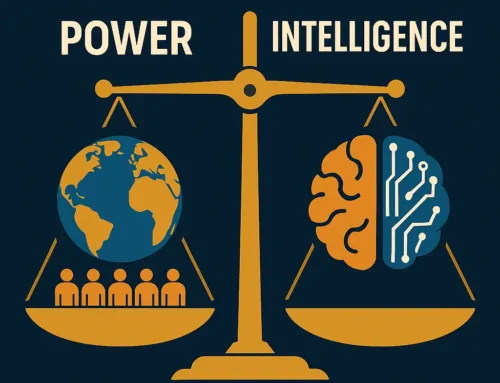
Approx. read time: 9.4 min.
Post: Leadership in Virtual Job Interviews: 8 Proven Ways
Leadership in Virtual Job Interviews: 8 Proven Ways
🎯 What Hiring Managers Really Evaluate Online
Virtual or not, interviewers are scanning for leadership signals: clarity, ownership, empathy, and strategic thinking. Many organizations also review your online footprint before or around the interview stage—so your “first impression” often happens before you ever join the call. Recent reporting summarizing a 2023 survey found that 73% of hiring managers check candidates’ social media and 85% have rejected applicants based on what they found. Separately, nearly half of employers are less likely to call someone if they can’t find them online—so an empty footprint can hurt you, too. Business News Daily
Leaders also master the medium itself. Research shows that gaze and perceived eye contact influence evaluations in online interviews, so camera placement and where you look genuinely matter. SpringerLink+1
🧭 1) Get Your Digital Brand in Order
Before the interview, search your name in an incognito window. Clean up results that don’t reflect leadership.
Priorities for a leadership-ready profile:
-
LinkedIn headline & about: Lead with outcomes (e.g., “Scaled CX ops from 250→750 tickets/day with 24h SLA”).
-
Featured section: Add 2–3 artifacts that prove impact (deck, case study, short demo).
-
Recommendations: Request one that highlights how you lead (coaching style, cross-functional alignment).
-
Consistency: Titles, dates, and scope must match your résumé.
Why it matters: most hiring teams now scan social profiles to confirm fit and verify details. Treat your profiles like a living portfolio, not a scrapbook. Business News Daily
🎥 2) Master the Medium
Great leaders adapt to constraints. Your setup is a leadership signal.
Lighting & framing. Use front-facing light, camera at eye level, and a clean, non-distracting background. (HBR even reported recruiters favored cooler lighting in tests.) Harvard Business Review
Eye contact that “lands.” Place the interview window near the camera. When making key points, look into the lens—studies show off-camera gaze decreases candidate evaluations. Harvard Business Review+1
Audio. A $30–$80 USB mic can transform presence. Do a 30-second test recording before the call (volume ~70–80%, room noise minimized).
Tech rehearsal. Join 5 minutes early, confirm screen-share permissions, and keep a local copy of your deck/portfolio in case cloud links fail. For more current best practices, see updated 2025 interview guides. Indeed
🤝 3) Be Extra Human – a visionary
The screen can flatten warmth. Counter it:
-
Open with context + gratitude (“Thanks for the time—excited to learn how your team is scaling the data platform post-Series B.”).
-
Active listening (paraphrase, ladder up to the business goal, confirm alignment).
-
Make it easy: keep a shareable résumé link and 1–2 proof links ready to drop into chat.
-
Micro-rapport: notice and connect (“I appreciated your recent post on structured hiring; here’s how I’ve run scorecards.”). Updated employer/coach guides emphasize rapport and nonverbal clarity in virtual formats. Indeed
📖 4) Stand Out With Stories (Use STAR-L)
Stories are sticky; lists of adjectives aren’t. Use STAR-L:
-
Situation – business context & stakes
-
Task – your specific ownership
-
Action – 2–3 decisive moves you led
-
Result – quantified outcomes (with a time window)
-
Learning – one insight you’ve since reused
Example (condensed): “Churn spiked to 7% (S). I owned NPS ops (T). I mapped drop-off to onboarding gaps and launched a 14-day ‘First Value’ sprint across CS/Docs (A). Churn fell to 4.3% in 90 days; activation rose 18% (R). I learned to co-design KPIs with Support early (L).”
🧠 5) Ask Strategic Questions (Think Like a Peer)
Leaders widen the lens. Use high-signal, strategic questions that show systems thinking, people care, and execution depth:
-
What are the top two business outcomes this role must move in the next 6 months?
-
Where does the team consistently get stuck—process, tooling, decision rights, or skills?
-
How do you measure success beyond top-line metrics (leading indicators, quality, cost to serve)?
-
If we’re wildly successful, what changes for customers? For internal teams?
-
What trade-offs are you making this quarter (speed vs. quality, coverage vs. depth)?
-
Where do cross-functional handoffs fail now?
-
What’s the decision-making model (single-threaded owner, committee, RFC)?
-
Which risks worry you most and how do you mitigate them?
-
How does performance feedback flow—cadence and clarity?
-
Which technical constraints (data, infra, compliance) shape priorities?
-
What escaped defects or incidents taught you the most this year?
-
How do you onboard leaders here—first 30/60/90 focus?
-
Where can this role create leverage for adjacent teams?
-
What customers do we learn most from and why?
-
What makes someone fail in this role?
-
What hiring bar do you want me to reinforce if I join?
-
How do you sequence roadmap vs. tech debt?
-
What playbooks should I bring or build first?
-
How does the org decide “stop/continue” on projects?
-
What budget/guardrails exist for experimentation?
-
Where would you deploy me in week 1 to earn trust fast?
-
Which past initiatives should I study to avoid déjà vu?
-
After our discussion, what concerns remain about my fit?
These align with the structured-interview trend on the employer side; mirror that clarity in your questions. shrm.org+1
📚 6) Showcase Your Leadership Development – leadership in virtual job interviews
Leaders are learners. Briefly highlight recent leadership courses or certifications (difficult conversations, coaching, inclusive feedback, systems thinking) and connect each to a real change you made on the job. This shows you apply learning, not just collect badges. Updated employer resources continue to emphasize skills-based, structured interviewing—meet them there. shrm.org
🌱 7) Share Stories of Growing Others
Leadership isn’t solo heroics; it’s multiplying others. Bring 1–2 examples of mentees you grew (baseline → outcome), or how you improved a squad’s velocity/quality via playbooks, shadowing, and feedback culture. As Jack Welch put it, “Before you are a leader, success is all about growing yourself. When you become a leader, success is all about growing others.” Jack Welch Management Institute
🗣️ 8) Ask for Feedback (Confidently)
End strong: “Before we wrap, what skills or evidence would you like to see more of from me?” Leaders seek clarity and welcome coaching. Offer to follow up with a one-pager or brief loom/demos that target any gaps the panel mentions. (Many contemporary guides encourage explicit rapport + clarity in virtual settings.) Indeed
🧪 Four Mini-Stories You Can Adapt (Plug-and-Play)
-
Alignment Rescue: Two teams shipping conflicting roadmaps → you convened a weekly 30-minute “Decision Forum,” replaced ad-hoc Slack approvals with an RFC, and reduced duplicate work 40% in 6 weeks.
-
Customer Save: A top account escalated after a failed rollout → you ran a blameless post-mortem, co-designed a recovery plan with the client, and turned them into a beta partner with a Q4 expansion.
-
People Growth: You inherited a struggling analyst → paired goals with a skills plan, set weekly challenge tickets, and promoted them to IC2 in 5 months.
-
Debt Dividend: CI pipeline flakes blocked releases → you spearheaded a 10-day stabilization sprint and cut time-to-deploy from 46 to 18 minutes.
🧰 Pre-Interview Tech Setup (Quick Visual Checklist)
| Item | Leadership-Signal Standard | How to Check Fast |
|---|---|---|
| Camera | Eye-level, stable framing, 10–15% headroom | Open camera app; adjust laptop on books if needed |
| Lighting | Front-facing, neutral/cool; no backlight silhouettes | Face a window or use a ring light (low–med) |
| Audio | Clear voice, no echo or HVAC hum | Record 30s test; set input gain ~70–80% |
| Network | Stable 10+ Mbps up/down | Run a speed test; have phone hotspot as backup |
| Backups | Deck/portfolio offline; alt meeting link ready | Download files; copy backup link to notes |
🧯 Common Mistakes to Avoid – leadership in virtual job interviews
-
Talking to the screen, not the lens during key points (hurts perceived connection). Nature
-
Over-presenting slides (leaders facilitate dialogue; keep slides as visuals, not scripts).
-
Laundry-list answers without results or learning (use STAR-L).
-
Ignoring the chat—drop links when relevant (résumé, case studies).
-
No “last mile”: not asking about concerns or next steps.
✉️ Post-Interview Follow-Up (Template)
Subject: Thanks + quick follow-up
Hi [Name],
Thanks for the great conversation about [team/product]. I’m excited about the chance to help drive [Outcome A and B]. Per our discussion on [topic], I’ve attached a one-pager on how I’d approach the first 30/60/90 days and a brief example of [metric/result] from my last role.
If there’s any additional detail I can share to help your decision, I’m happy to send it along.
Best,
[You]
❓ FAQs – leadership in virtual job interviews
Q1. How do I show leadership in virtual job interviews without formal manager experience?
Use stories where you led initiatives (process improvements, customer saves, cross-team projects). Emphasize ownership, influence, and measured outcomes.
Q2. What’s the best way to build rapport on video?
Start with context and curiosity, mirror the interviewer’s pace, and keep eye contact on key points. Use the chat to share concise, helpful links. Indeed
Q3. How many stories should I prepare?
Three to five STAR-L stories that map to role priorities (delivery, teamwork, problem-solving, customer impact).
Q4. Is it OK to take notes on screen?
Yes—just tell them. Keep notes brief, and don’t break eye contact during important answers.
Q5. What if my tech fails mid-interview?
Acknowledge quickly, switch to your backup (phone hotspot/alternate link), and offer to continue by phone while you rejoin video. That response itself signals calm leadership.
Q6. How do I ask for feedback without sounding insecure?
Ask targeted, forward-looking questions: “What skills or evidence should I show next to make this an easy ‘yes’?”
Q7. Should I send a follow-up deck?
If the panel surfaced specific gaps, a 1-page plan or short loom addressing them can tip the balance.
Q8. What background should I use?
Keep it simple and relevant; avoid virtual backgrounds unless they’re clean and non-distracting. Neutral/cool lighting tends to test well with recruiters. Harvard Business Review
Q9. Do interviewers really check my social media?
Yes, many do. Recent reporting cites 73% of hiring managers using social media checks and 85% rejecting candidates for red flags. Keep profiles professional and findable. Business News Daily
Q10. How can I quantify leadership impact?
Tie actions to metric shifts (retention, activation, cycle time, cost to serve, defect rate). Add time windows (e.g., “in 90 days”) to anchor credibility.
🔗 Sources & References
-
Business News Daily — social media checks stats and what employers look for (updated Sept 16, 2025). Business News Daily
-
Harvard Business Review — virtual interview setup & camera/lighting guidance. Harvard Business Review+2Harvard Business Review+2
-
Journal of Business and Psychology (2024/2025) — eye contact and applicant evaluation in video interviews. SpringerLink
-
Scientific Reports (Nature, 2024) — off-camera gaze reduces evaluations in simulated online interviews. Nature
-
Indeed Career Guide (updated 2025) — virtual interview tips and rapport. Indeed+1
🧭 Wrap-Up
Virtual interviews are a constraint—and a canvas. When you master the medium, lead with stories and strategy, and close with clear, feedback-seeking intent, you radiate the leadership in virtual job interviews that hiring panels are hoping to see.
Recommended Video: 5 Steps to ACE your Job Interview (Updated 2025) — CareerVidz (Jan 17, 2025, 23:53)
URL: https://www.youtube.com/watch?v=xxO7pb1U1fo
Why: Timely, high-engagement walkthrough of 2025 interview expectations with concrete answer structures you can adapt. YouTube









